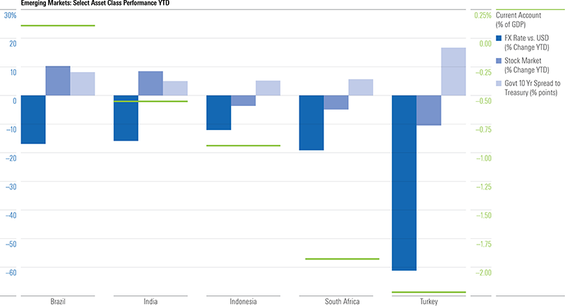We've published new research. Read highlights from our latest Markets Observer.
Every quarter, Morningstar’s quantitative research team reviews the most recent global market trends in finance and evaluates the performance of individual asset classes. Then, we share our findings in the Morningstar Markets Observer, a publication that draws on quantitative analysts’ research and market insights.
5 trends from our latest quarterly market update:
- U.S. economic growth has been exceptionally strong in 2018. The first estimate of third-quarter GDP growth showed the U.S. economy growing 3.5%, following a 4.1% expansion in the second quarter. Labor market indicators remain historically tight, and while wage growth has not accelerated significantly, it remains on solid footing. Corporate and personal tax cuts have provided an economic tailwind. That said, the International Monetary Fund recently warned that trade tensions could undermine the positive momentum, even in the U.S., while investors remain sensitive to signs of accelerating inflation pressures and rising interest rates following a very strong second quarter.
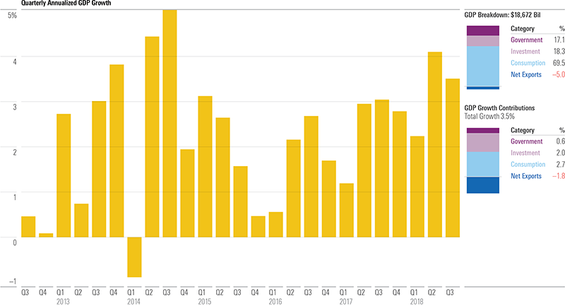
- Fed policy and inflation expectations have driven interest rates higher across the curve. With further tightening in the labor market and a slow yet steady rise in inflation, Federal Reserve officials have signaled that they intend to continue increasing the Federal Funds target range in the coming quarters to prevent the U.S. economy from overheating. Short-term market interest rates have risen in tandem with market expectations for further Fed rate hikes, and long-term rates have also increased, albeit to a lesser degree. Market expectations for further increases in interest rates was cited as an important factor behind the equity market volatility witnessed in the first half of October.
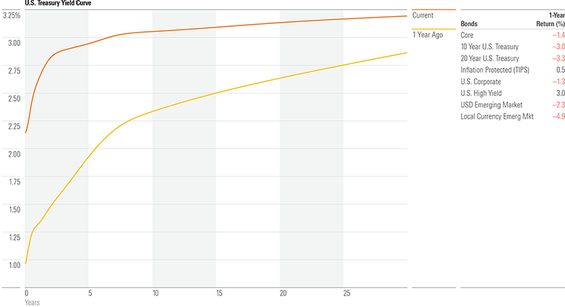
- U.S. equities and commodities have significantly outperformed other asset classes. Ongoing economic strength in the U.S. coupled with elevated earnings expectations drove U.S. equities to return nearly 8% in the third quarter of 2018, as broad market indices touched new nominal highs. By contrast, other developed-markets equity indices continued to trade sideways, with a 12-month trailing return of less than 3% through the third quarter. Emerging-markets stock returns have been even worse, as rising U.S. interest rates and trade tensions with the U.S. have undermined investor appetite for emerging-markets assets.
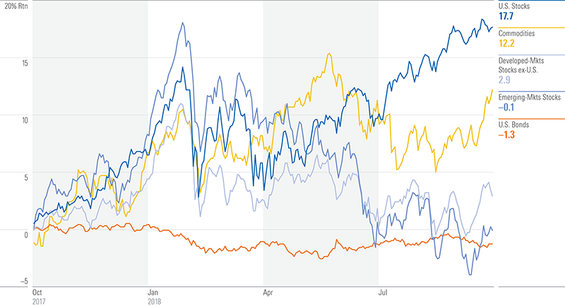
- Commodity producers have done well. But southern Europe? Not so much. Commodity producers such as Russia, Australia, Norway and, to a lesser extent, Canada, have all benefitted from relatively strong commodity returns over the year through the third quarter. U.S. firms have also done relatively well in the past 12 months. Meanwhile, Italy, Greece, and Spain have weighed heavily on developed-market returns despite relatively strong performances across the rest of Europe.
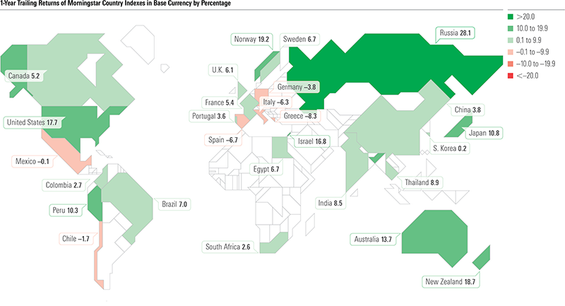
- Some emerging markets have remained resilient despite broad market pressure. While many emerging-markets currencies have sold off this year, and emerging-markets equities have underperformed their developed-markets counterparts, some emerging-markets asset classes have done relatively well in 2018. Not surprisingly, those countries with the strongest external balances have generally done better than their peers, but even among those countries with wider current account deficits, equity and bond markets have been more resilient than in 2013 during the “taper tantrum.” Rather, country-specific developments appear to have been more important than broad macro trends. This may change if U.S. rates move swiftly higher.
